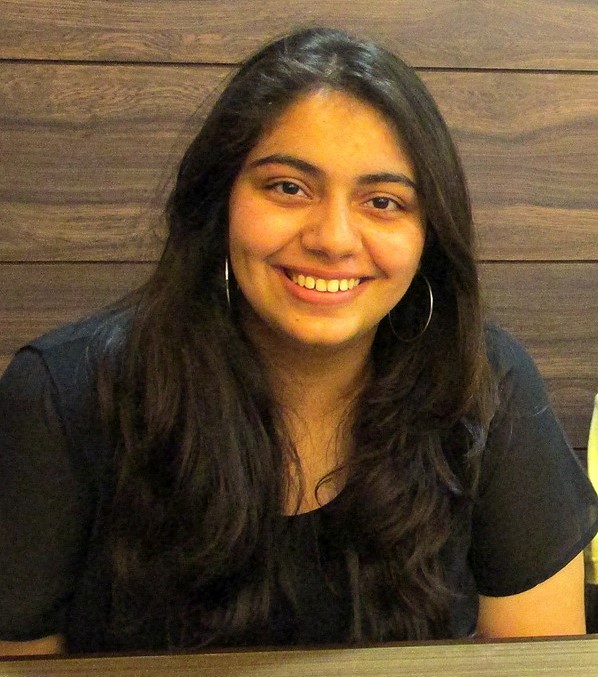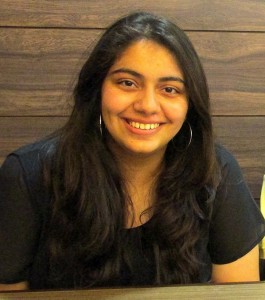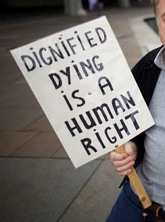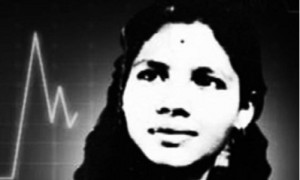In this blog post, Srishti Khindaria, a student of Amity Law School, Delhi, Guru Gobind Singh Indraprastha University, analyses the concept of the right to die on the debate over euthanasia. The blog post also analyses the implication of the Aruna Shanbaug case and also how The Medical Treatment of Terminally Ill patients (Protection of Patients and Medical Practitioners) Bill, 2016 could be of some help.
The Right to Life is enshrined under Article 21 of The Indian Constitution as a fundamental right guaranteed to each and every citizen of Indian. This right has been liberally interpreted by the courts so as to mean something beyond just mere survival and existence and the Supreme Court further went on to assert that this right is the heart of the fundamental rights enshrined under part III of the constitution. [1]
In India, the Right to Life has received the broadest and widest possible interpretation at the hands of the judiciary. It not only includes protection of a person’s life but also confers upon the citizens a right to live a dignified life. It takes within its ambit some of “the finer graces of human civilization, which make life worth living,” and it has expanded its scope to include the culture, tradition and language of the person concerned. Now the question that arises is if the right to life includes living with dignity would the right to end life with dignity also fall within this right? Many have argued that Article 21 confers upon an individual the right to live with the dignity it should also bestow upon individuals the “Right to Die.”
The right to die however contravenes the provision under section 309 of the Indian Penal Code as well as section 306. According to Section 309,
“Whoever attempts to commit suicide and does any act toward the commission of such offense, shall be punished with simple imprisonment for a term which may extend to one year [or with fine, or with both].“
Those in favour of this section argue that it is based upon on the principle that lives of men are not only valuable to them but to the state too, which protects them. However, this provision has been questioned on moral and constitutional grounds not only by human rights activists but also the courts of law.
This question of law came up for the first time before the Bombay High Court in State of Maharashtra v. Maruti Sripati Dubai. The court held that right to life under Article 21 included the right to die, and it struck down section 309 of the Indian Penal Code as unconstitutional. Further in P Rathinam v. Union of India supporting the decision of the Bombay High Court in Maruti Sripati Dubai, a Division Bench of the Supreme Court held that right to die was included in Article 21 and also declared section 309 of the Indian Penal Code as unconstitutional.
In 1996, the case of Gian Kaur v. the State of Punjab came to the Supreme Court where abatement of the commission of suicide under section 306 of the Indian Penal Code was under question. The accused contended that any person abetting the commission of suicide by another is merely assisting them in enforcing their fundamental right under Article 21. However the Constitution Bench of the Supreme Court held that right to die is not included under Article 21 or the “right to be killed.” Any aspect of life which makes life dignified may be included but none that extinguishes it. And that the “right to die- if any- is inherently inconsistent with the right to life as is “death” with “Life”.”
The Debate over Euthanasia
Euthanasia is derived from the Greek words “eu” meaning well or good and “thanatos” meaning death. Therefore, euthanasia could be seen to mean good death. The Oxford dictionary defines Euthanasia as “painless killing of a person who has an incurable disease or who is in an irreversible coma.” According to the House of Lords Select Committee on Medical Ethics, it is “a deliberate intervention undertaken with the express intention of ending life to relieve intractable suffering”.
Euthanasia encompasses various dimensions; it could be;
- Active Euthanasia – It is brought about by an act, by introducing something that facilitates death. Direct and deliberate measures are taken to cause the death of the patient. For example, an overdose of painkillers
- Passive Euthanasia – No direct actions are taken. Instead, measures are taken to withhold or withdraw supportive measures i.e. death is brought about by an omission. For example, switching off the ventilator machine which is sustaining the life of the person.
- Voluntary Euthanasia – It takes place with the consent of the person who is about to die.
- Non-Voluntary Euthanasia – It includes cases where a person is unable to make an informed decision about living and dying or is unconscious, and someone else takes the decision on his/her behalf.
It also covers cases of children who are mentally ill and emotionally able to make decisions but not old enough in the eyes of the law to make such a choice so someone else must make it on their behalf.
- Involuntary Euthanasia – It includes cases where people not willing to die- i.e. those who choose to live- are killed anyway. It is usually termed as murder, but it may be possible to think of cases where such acts would be for the benefit of the person dying.
Such a request for premature ending of life has led to serious debates about the role of such practices and their impact on contemporary health care practices. This debate cuts out several dynamic and complex aspects such as ethical, legal, religious, human rights, economic, cultural and social.
Euthanasia in India and the Aruna Shanbaug case
In the Indian context, the demand for legalization of euthanasia gained notable attention only after the Aruna Shanbaug case. Demands were made before this case too, through several petitions submitted to different courts and Presidents. This was, however, the first case where the subject of euthanasia was entertained by any court.
Aruna Shanbaug was a 24-year-old nurse from Karnataka working in King Edward Memorial Hospital in Mumbai. On the evening of 27th November 1973 while Aruna was on duty, hospital sweeper attacked her and tried to rape her. The sweeper sodomized- when he found out that she was menstruating her- in the most brutal of ways in the canine experiment room of the ways. He strangulated her by wrapping a dog chain around her neck. She was found the next morning, unconscious with blood all over her. It was suspected that due to strangulation blood supply to her brain had stopped and caused damage. She received serious injuries to her brain stem and cervical cord and pushed her into a PVS (permanent vegetative state). Aruna Shanbaug remained in a vegetative state for over 40 years in the same hospital and finally breathed her last on 18 May 2015.
The case was taken up as a writ petition filed in 2009 under Article 32 of the Indian Constitution by Pinki Virani- claiming to be Aruna’s next friend. [2] The court held that active euthanasia is a crime world over except where permitted by legislation. In India, active euthanasia is a crime under sections 302 & 304 of IPC and physician-assisted suicide is a crime under Section 306 of IPC, which deals with abetment to suicide. The Supreme Court turned down the plea for euthanasia in her case but went on lay down guidelines for passive euthanasia in the ‘rarest of rare circumstances.’
The judgment however, is considered historic; its recommendations for allowing passive euthanasia are as follows:
- Any petition for application Passive Euthanasia has to be filed with the relevant high court. The Chief Justice of that High Court would then constitute a Bench of at least two Judges who would decide whether or not to grant approval.
- Before taking any decision, the bench should seek the opinion of a committee of three reputed doctors to be nominated by the bench. Preferably, one of the three doctors should be a neurologist; one should be a psychiatrist, and the third a physician.
- The High Court Bench should issue the notice to the State and close relatives e.g. parents, spouse, siblings etc. of the patient and the next friend, in their absence.
- The Court should supply a copy of the report of the doctor’s committee to them as soon as it is available.
- After hearing pleas of all the parties, the High Court should give its verdict.
- This verdict should be given at the earliest.
Further, Lodha J in the case of Naresh Marotrao Sakhre v. Union of India affirmed that Euthanasia or mercy killing is nothing but homicide whatever the circumstances in which it takes place.
The Medical Treatment of Terminally Ill patients (Protection of Patients and Medical Practitioners) Bill, 2016
Addressing the heavily debated issue of mercy killings and euthanasia the government has come up with draft Bill on passive euthanasia which shall grant terminally ill patients the right to withhold treatment. According to the draft, any terminally ill patient above the age of 16 is competent to decide whether or not he/she wants further treatment administered.
If a person is capable of making an informed decision about the course of his or her treatment and can effectively communicate it then such a decision is binding on the doctor treating the patient, provided the doctor too feels that the patient is making an informed decision and such decision has been communicated to his/her family.
However, the bill is facing severe and bitter criticism; firstly many oppose the age of consent being set at 16, and secondly many doctors and experts feel that the draft Bill is a colossal disappointment. [3]
Conclusion
Though the government is trying to take legislative actions to legalize passive euthanasia, their actions seem misguided. The new draft bill only covers voluntary passive euthanasia in cases where the patient is above the age of 16 and, where the patient has capable of making an “informed decision.” It fails to provide proper care in cases where the patient may be incompetent- that is below the age of 16, unconscious, of unsound mind, brain dead, in a permanent vegetative state or a state of unconsciousness as the family members who want to withhold treatment will have to move to the High Court. This will add to the burden of the already overburdened courts, with about 3 million cases pending with them already. Further, our system only recognizes passive euthanasia which according to doctors has been abandoned by modern medicine.
Footnotes:
[1] Unni Krishnan v. State of Andhra Pradesh
[2]Aruna Ramchandra Shanbaug v. The Union of India
[3]http://scroll.in/article/808096/draft-bill-on-euthanasia-says-16-year-olds-can-decide-on-withdrawing-life-support















